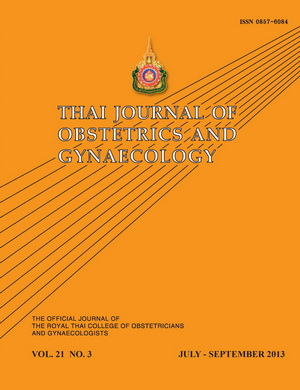Assessment of Endometrial Thickness and Ovarian Volume as Risk Factors for Endometrial Carcinoma in Women with Recurrent Postmenopausal Bleeding
Main Article Content
Abstract
Objectives: To determine the prevalence of endometrial carcinoma and associated risk factors including endometrial thickness and ovarian volume in women with recurrent postmenopausal bleeding after initial benign tissue diagnosis.
Materials and Methods: A cross-sectional study was conducted on 148 consecutive women with recurrent PMB. All patients had transvaginal ultrasound for endometrial thickness and ovarian volume assessment, hysteroscopy and endometrial sampling was attempted.
Results: The time intervals between the first and recurrent episodes ranged from 5-31 months with mean 15.7± 6.7 months. The prevalence of endometrial cancer and hyperplasia was 6.8% and 9.5% respectively. Using logistic regression analysis, the best predictors of high risk lesions were, thick endometrium, and recurrent multiple episodes of vaginal bleeding than a single episode episode (p=<0.001, 0.018) respectively. Increased mean ovarian volume (MOV) were significantly more likely to be associated with endometrial cancer or hyperplasia (Odds ratio 2.13, 95% CI 1.12–4.21, p<0.001).
Conclusion: Our data support that substantial number of women presenting with recurrent postmenopausal bleeding was found to have endometrial carcinoma or hyperplasia. Hysteroscopy and entometrial biopsy should be advised in the selected cases based on endometrial thickness measurement of equal to or greater than 5 mm, increased ovarian volume and those with multiple episodes rather than heavy bleeding.


